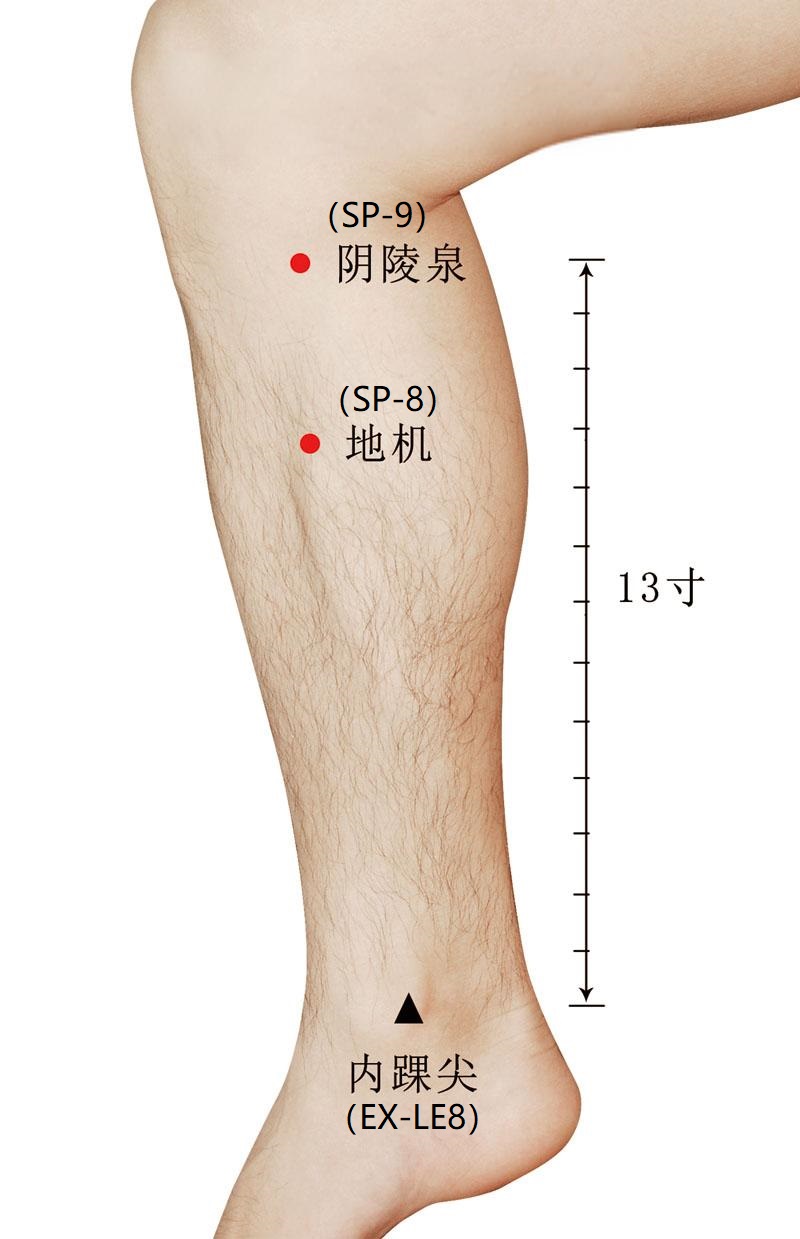Introduction To Acupoints
Earth Cure
Acupoint Name:Earth Cure Acupoint
Acupoint Code:SP-8
PinYin:diji
Associated Meridian:The Spleen channel of Foot, Greater Yin
Main Diseases for Treatment
1.Irregular menstruation, dysmenorrhea, metrorrhagia, and other gynecological conditions; 2.Abdominal pain, abdominal distension, diarrhea, loss of appetite, and other spleen and stomach conditions; 3.Difficult urination, edema, and other conditions related to the spleen's inability to transform and transport dampness.
Acupoint Location
On the medial side of the lower leg, along the line connecting the tip of the medial malleolus and Yin Mound Spring (SP-9), 3 cun below Yin Mound Spring (SP-9). (This acupoint is bilateral, one on each side.)
Acupoint Selection Techniques
Step 1: Sit upright or lie on your back. Step 2: Locate Yin Mound Spring (SP-9): Use your thumb to push along the medial edge of the lower leg bone (the medial edge of the tibia) from the bottom up, until the thumb reaches the knee joint. At the point where the lower leg bone (tibia) bends upwards, you can feel a depression, which is Yin Mound Spring (SP-9). Step 3: Measure vertically downward from Yin Mound Spring (SP-9) by four horizontal fingers (with the index, middle, ring, and little fingers together, the width of the four fingers at the level of the proximal interphalangeal joint of the middle finger is 3 cun, also known as the "one-fu" method). On the posterior edge of the lower leg bone (tibia), this is the location of the acupoint.
Acupoint Chart

0 Comments
Please login first!
Cancel
Log In
Please login first!
Cancel
Log In